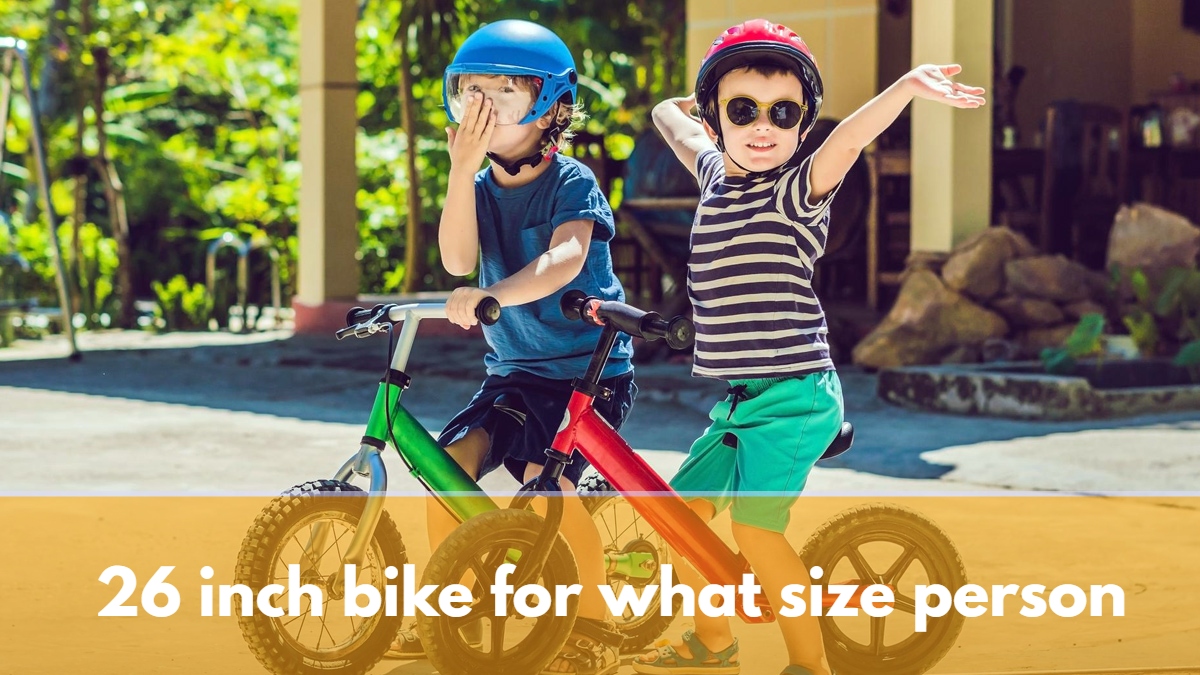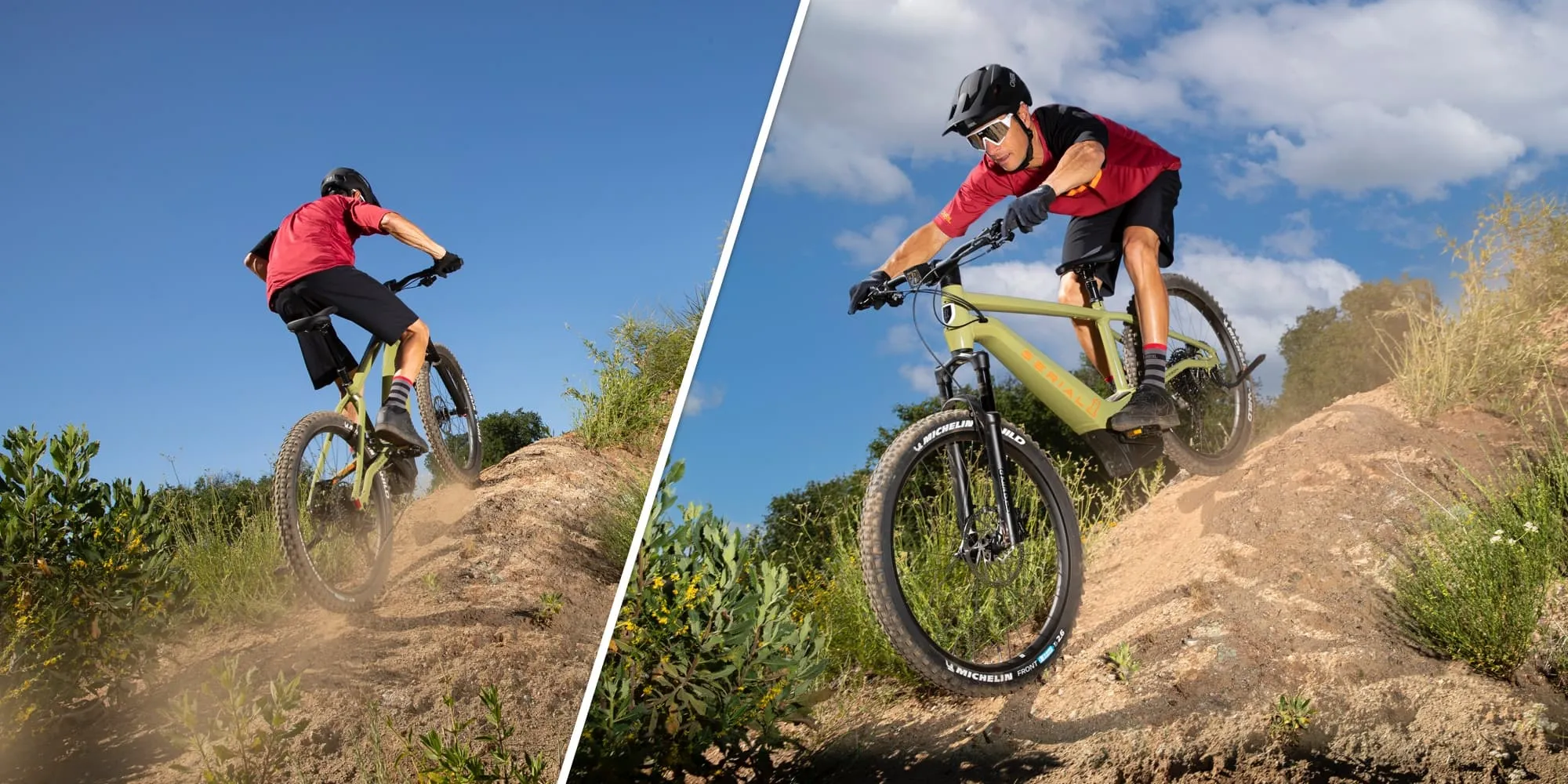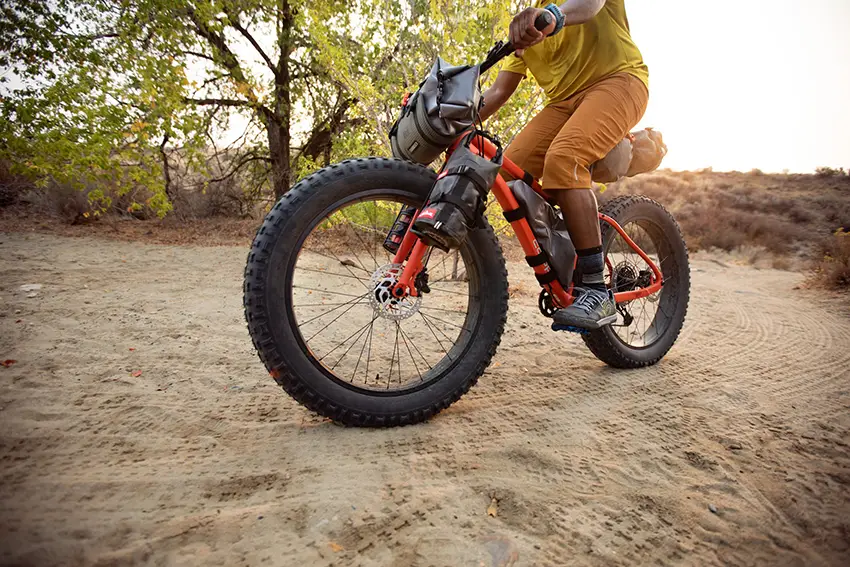Embarking on the quest for the perfect bike can be akin to searching for the missing piece of a puzzle – the final element that completes the picture of your ideal cycling experience. The 26-inch bike, a stalwart of the mountain biking community, offers a unique blend of agility and accessibility, making it a perennial favorite. Yet, this begs the question: “26 inch bike for what size person?” In this comprehensive guide, we will navigate the contours of sizing, exploring how to match a 26-inch bike to your stature for an unparalleled riding adventure.
Understanding the intricacies of bike sizing is about bridging the gap between you and your ideal ride. It’s about achieving a synergy that not only elevates comfort but also enhances performance. Whether you’re a trail-blazing aficionado or a pavement-pounding newcomer, join us as we pedal through the nuances of finding a 26-inch bike tailored just for you. Let’s gear up and get rolling!
Navigating the Wheel Size Maze: Understanding 26-Inch Bikes
The wheel size of a bike is its signature, its defining characteristic that influences everything from handling to stability. With 26-inch bikes, we’re looking at a diameter that was once the benchmark in mountain biking. Despite the rise of 27.5-inch and 29-inch models, 26-inch bikes remain relevant, particularly for those desiring a nimble and responsive cycling experience.
The allure of 26-inch wheels lies in their versatility. They typically make for bikes that are more manageable in tight turns and easier to launch into the air. This wheel size offers a lower center of gravity which can be a boon for balance and control, making it an excellent choice for riders who prioritize maneuverability over raw rolling power.
But who does this wheel size suit best? Traditionally, 26-inch bikes have been seen as the go-to for riders of a shorter stature due to their proportionality. However, they can be a delight for anyone looking for a bike that handles like it’s on rails, whether on twisty trails or bustling city streets. To find your perfect fit, we’ll have to delve deeper into the relationship between rider height, wheel size, and bike geometry.
Determining Your Fit: Height Matters, but So Does Inseam
When it comes to finding the right bike, height is a critical piece of the puzzle, but it’s not the only one. Your inseam length is an equally important measurement that directly influences your comfort and efficiency on two wheels. It’s this distance from your crotch to the ground that impacts how well you can reach the pedals and maintain contact with the ground when stationary.
A bike that’s too tall for your inseam can lead to overextension when pedaling, which not only hampers your riding efficiency but can also cause aches and pains in your arms and back. On the flip side, a bike that’s too short can make for cramped quarters, potentially leading to knee discomfort and a lack of standover clearance which can be problematic on trails.
To ensure you’re looking at the right 26-inch bike, it’s super important to measure your inseam correctly. This isn’t just a matter of your pant size; it’s a precise measurement best taken with your shoes off and feet about shoulder-width apart. From there, it’s a matter of matching your inseam to the appropriate frame size, taking into account the nuances of bike geometry, which can vary between models and manufacturers.
General Size Guidelines: A Starting Point for Your Quest
Now that we’ve established the importance of both height and inseam, let’s lay out a foundational map for your journey toward the right-sized 26-inch bike. Below, you’ll find a table that serves as a starting point, correlating rider height to suggested frame sizes. Keep in mind, these are general recommendations – the real test comes when you straddle the bike.
- Frame Size – Rider Height
- XS – 4’8″ – 5’1″
- S – 5’1″ – 5’4″
- M – 5’4″ – 5’7″
- L – 5’7″ – 5’10”
- XL – 5’10” and above
Remember, these guidelines are a compass, not a GPS. They’ll point you in the right direction, but the nuances of body proportions mean that two people of the same height might need different sized bikes. Additionally, brands may have their own sizing charts, which can further refine your choice. It’s super important to cross-reference this information with a specific brand’s geometry to hone in on the ideal fit.
For those standing at the thresholds of these categories, the decision may come down to personal preference and riding style. Some may prefer a larger frame for a stretched, more aggressive riding posture, while others may opt for a smaller size for easier handling and control. In the following sections, we’ll explore how your individual preferences and riding style further influence the right choice for you.
Beyond Height and Inseam: Considering Riding Style and Personal Preferences
Once you’ve narrowed down your options using height and inseam measurements, it’s time to fine-tune your choice by factoring in your riding style and personal preferences. Your unique approach to cycling—whether you’re gliding down city streets or tackling rugged mountain trails—can have a significant impact on the size of the bike you should consider.
For instance, if you’re into aggressive mountain biking, where precision and responsiveness are paramount, you might lean towards a bike that is slightly on the smaller side. This preference can provide a tighter feel, allowing for quick turns and more air control. Conversely, if long-distance rides or racing are more your speed, a larger frame might benefit you, offering a more stretched-out position conducive to aerodynamics and speed.
Let’s also talk about the comfort factor. Some riders prioritize a more upright position, especially those who use their bikes for leisurely rides or commuting. In this case, opting for a smaller frame could facilitate a straighter back, resulting in a more comfortable ride.
Moreover, personal preference plays a really key role in determining the feel of a bike. Two cyclists of identical height and inseam might choose different sized bikes based on their personal comfort and the ‘feel’ of the ride. Some might prefer a more compact frame for the sense of control it offers, while others may favor a roomier setup for the freedom of movement it provides.
Therefore, while sizing charts serve as an excellent starting point, they can’t replace the subjective experience of actually riding the bike. This brings us to the importance of test rides.
The Significance of Test Riding: Experiencing the Fit Firsthand
You wouldn’t buy a pair of shoes without walking around in them first, and the same goes for a bike. There is no truer test of a bike’s fit than a test ride. This is your chance to feel the nuances of how a bike handles, responds, and conforms to your body.
As you ride, take note of any discomfort. Do your knees feel too close to your body, or is there any strain in your back or neck? A well-fitting bike should feel almost like an extension of yourself—intuitive and natural. You’ll want to test the bike in conditions similar to those you plan to ride in, whether it’s a smooth pavement or an unpaved trail. This will give you the best indication of whether a particular size is the right one for you.
Conclusion
In conclusion, the pursuit of the perfectly sized 26-inch bike is more than just a quest for a comfortable ride; it’s the beginning of a cycling adventure that’s tailored just for you. Embrace the journey, enjoy the ride, and when you’re ready to make that all-important purchase, be sure to visit Refried Cycles for a selection that will help you embark on your cycling journey with the right fit.









